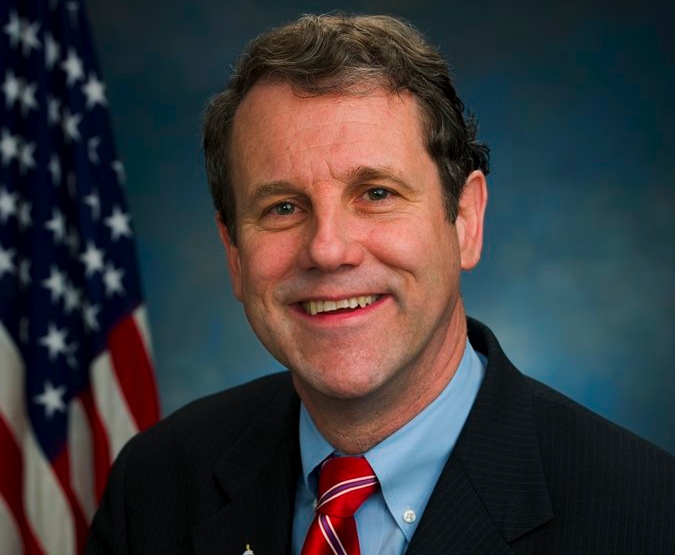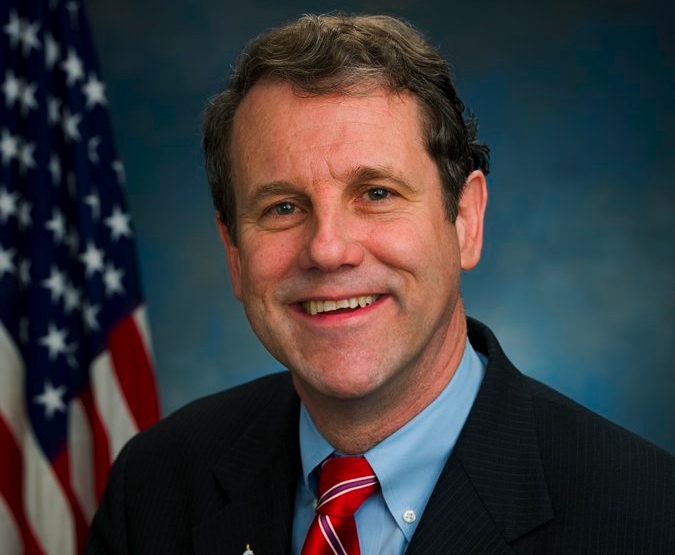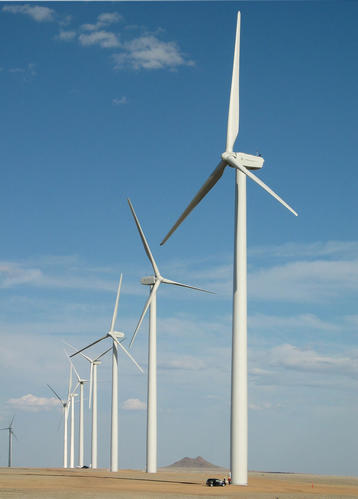Originally posted at the Breakthrough Institute.
For advocates of immediate and strong climate and clean energy legislation, there’s one man we should all be paying close attention to: Senator Sherrod Brown (D-Ohio).
Senator Brown is one of several Democratic Senators from America’s “Heartland” states that form the critical swing block of legislators that will need to support any climate and clean energy bill that hopes to cross the critical 60-vote threshold in the Senate. Along with a small handful of potential Republican swing votes, these Heartland Democrats have to get behind strong climate policy if we want to see it enacted anytime soon.
Senator Brown has spoken eloquently on multiple occasions about the power of clean energy technologies to revitalize the hard-hit industrial communities of Ohio and other Heartland states. Just this week, the Ohio Senator penned an op ed in the Capitol Hill paper Roll Call declaring that the time is now to enact strong climate policy:
“If we care about the world in which we live and the generations that will follow us, then we must no longer dismiss the lethal risks global warming poses to our planet. We must craft an aggressive strategy to combat global warming, and we must do it now. … Inaction is not an option.”
And yet, the Senator has not pledged support for a specific climate policy. He was among 10 Democratic Senators who signed a letter (pdf) last June, saying they couldn’t support climate legislation that resembled the Lieberman-Warner Climate Security Act, which had just been defeated on the Senate floor. That group now includes five more Democratic Senators, and other Democrats have joined a group led by Senator Evan Bayh of Indiana to stake their claim on climate policy as well.

Senator Brown is still on the fence, and as the old saying goes, the devil is truly in the details: if the details of climate and clean energy legislation make it something Senator Brown can support and even champion, then there’s a decent shot of seeing the remaining swing Senators jump on board, putting 60 votes within reach. On the other hand, if Senator Brown can’t support the proposal because he’s not convinced it’s in the best interests of Ohio or the nation, then kiss hopes of climate action this year good bye.
It’s simple: if we want to pass policies that will truly catapult the United States into a clean and prosperous energy economy, slash global warming pollution, and make clean energy cheap and abundant, we need to pass the “Sherrod Brown Test.”
So what are the keys to passing this test? Here are three factors to watch closely …
First, passing the Sherrod Brown Test requires minimizing the economic costs of higher energy prices and maximizing the economic benefits of the legislation, particularly for the manufacturing sector.
Senator Brown is a progressive champion of the manufacturing industries and union jobs that employ so many of his state’s residents in good-paying middle-class jobs. Energy-intensive manufacturing industries are sensitive to the price of energy inputs and these industries, already hard hit by the recession, are even more at risk if energy prices rise too much.
Climate legislation premised on a significant increase in dirty energy prices will therefore have a very hard time passing the Sherrod Brown Test. Measures to keep the costs of carbon – and therefore Ohio electricity rates – from rising too high are likely a necessity, and the more transparent they are, the more likely they will be to assure Senator Brown that the worst-case scenarios drummed up by fossil fuel lobbyists, right wing think tanks, and other forces of the status quo aren’t going to materialize.
While states like Ohio have a lot to lose if climate policy is done poorly, Senator Brown also knows his state has a lot to gain if it’s done right. Investing in clean energy will spark a burgeoning growth industry that can fill factory floors with work orders (and good jobs) again. As the senator wrote in Roll Call:
“Across my state, manufacturing towns such as Toledo, Cleveland, Dayton, Youngstown and Columbus are leading the way in advanced manufacturing for new clean energy technologies. Our state and our nation need this boost in manufacturing, because in important ways, manufacturing jobs anchor our nation’s middle class.”
To pass this part of the test, the revenues raised by climate legislation should be reinvested to spur the birth of a prosperous clean energy economy, including new manufacturing jobs in revitalized industrial sectors. In particular, we should focus on investments to accelerate the development and deployment of new clean energy technologies and ensure the industries and jobs of tomorrow take root here in America.
Second, passing the Sherrod Brown Test requires major public investments in clean energy R&D and the deployment of emerging clean technologies — both designed to make clean energy cheap and affordable.
Senator Brown and the rest of the Heartland Democrats who were unable to support last summer’s Lieberman-Warner bill say they need to see more direct investments in the portfolio of clean and affordable energy technologies necessary to meet the emissions reduction targets set by climate legislation. As they wrote in June [PDF]:
“[Climate Legislation Must] Invest Aggressively in New Technologies and Deployment of Existing Technologies. There is no doubt that we need a technological revolution to enter into a low carbon economy. It is critical that we design effective mechanisms to augment and accelerate government-sponsored R&D programs and incentives that will motivate rapid deployment of those technologies…”
Yes, they clearly have in mind carbon capture and storage (CCS) technology that could enable these coal-reliant states to continue burning the fossil fuel without damaging the climate. But they also envision low-cost solar panel technologies built in Akron or Youngstown, a new generation of biofuels made from agricultural residues and forestry wastes in rural Arkansas and Missouri, and affordable and efficient plug-in hybrid cars rolling off assembly lines in Ann Arbor and Detroit.
Not only are investments in these new clean energy technologies welcome boons to the economies of Heartland states, they are also essential to make clean energy cheap and affordable. Both a step-change increase in the scale of federal energy R&D and the accelerated deployment of emerging technologies to capture economies of scale are critical to lowering the real, unsubsidized costs of clean energy technologies. Making clean energy cheap is a necessary objective of any climate policy in order to secure an affordable and reliable supply of energy to power a prosperous American clean energy economy.
Third, passing the Sherrod Brown Test requires reassuring the Senator that climate policies will not disproportionately impact Ohio and similar states.
Senator Brown has repeatedly warned that climate policies that raise the price of dirty fossil fuels – including the coal that powers almost 90 percent of Ohio’s electricity needs – may end up disproportionately impacting Ohio and other coal-dependent states.
“We need to make climate change work in a way in which ratepayers in Ohio don’t get overwhelmed by price increases and manufacturing in our state doesn’t go to China,” Brown told the Columbus Dispatch last month.
That means President Obama’s plan to use 80 percent of cap and trade to fund his middle-class tax cuts will fail the Sherrod Brown Test. The same is clearly true of the Cap and Dividend proposal, which calls for equal per capita dividends for every American and would transfer wealth from carbon intensive states like Ohio to states like California, Vermont and New York.
“I support the (overall) Obama budget, but I am concerned about this cap-and-trade money because the burden will come to Ohio and the benefits are spread to 300 million Americans,” Brown told the Dispatch. “That part of the budget is not acceptable.”
As I told Bill Scher in an op ed that just appeared in the Omaha World-Herald (and at Grist online), passing this part of the test will mean that the bulk of carbon revenues must be proportionally returned to the states or regions from which they are generated — both because coal-dependent, Rust Belt states like Ohio have the most to lose from climate policy and because they need the most help.
If we want to get the best bang for the carbon buck and want to maximize the economic gains (to pass part one of this test), we should avoid taxpayer rebates or free giveaways to entrenched industries and instead focus on investments that create clean-energy jobs, lower the cost of clean energy, and help make our bottom-line energy bills manageable and stable.
So while the House and Senate debate and draft climate and clean energy policy and countless advocates and organizations weigh in, we’d better keep Sherrod Brown in mind and remember this: done wrong, climate policy will be heading nowhere but a collision course with a Senate filibuster. But as Senator Brown writes:
“Done right, climate change legislation will improve our nation’s competitiveness by creating new jobs and developing new technologies. We must confront the twin challenges of our economy and environment with a robust and thoughtful response. And we must recognize that climate change legislation is an opportunity to rebuild our nation’s manufacturing base.”
Done right, climate policy can actually pass.




